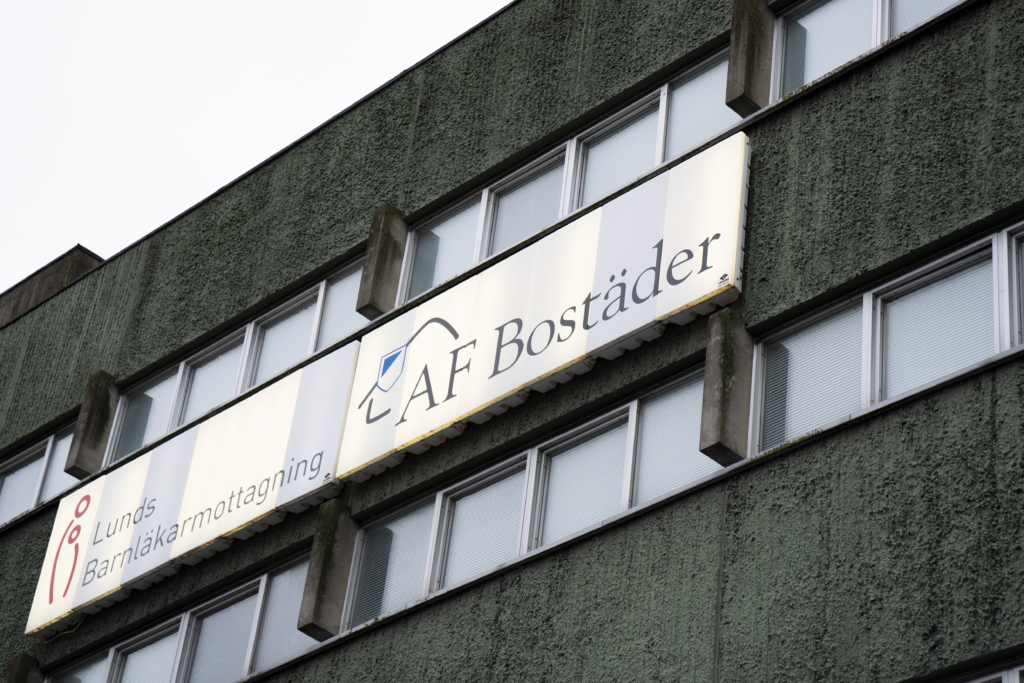Should parking spots really be a part of Lund's student housing and campus? Six master's students at Lunds university are critical of AF Bostäder and LTH's priorities.
“Be sure to get a bike as soon as possible!”, we were all told on our first day in Lund. Rain or shine, night or day, the bike is the means of transport of choice for the Lundesian student, and essential for a vibrant student life. Yet, the student accommodations provided by AF Bostäder, which over seven thousand students call home, feature a large number of… parking spots.
An empty asphalted rectangle. Parking spots may seem innocent at first, but are the embodiment of a car-dependent and fossil-fueled society. They are a textbook example of unsustainable land use: sealing the land and thus accumulating toxins and oil, preventing any form of biodiversity, radiating heat, the list goes on and on.
Beyond the immediate environmental footprint, prioritizing parking has, much like wider roads, been shown many times to induce driving; the more parking spots, the more cars. The more cars, the more emissions, car accidents, noise pollution, even income inequality, and overall a more unsafe and unsustainable Lund. For a city that needs to drastically reduce its number of cars, something doesn’t add up here.
Surely, parking lots can serve a purpose. Moving, accessibility, services and emergencies mandate a certain level of them. The question is, however, how many are actually needed?
The parking minimums set by Lund Municipality, last updated in 2018, mandate 2 parking spots per 1000 square metres of net living area. For Ulrikedal, one of AF Bostäder’s student housing areas, that means 58 parking spots. The actual number? 179. For those of us who are residents here, our windows face a whole lot of empty parking spots, one or two of which are occasionally occupied by a visiting parent, a moving car, one of the very few student car owners, or even someone who has absolutely no ties to Ulrikedal. Most of them stand empty day in and day out. Self-conducted observations indicate this is a consistent pattern across AFB’s properties.
Of course, AFB is not the only one to blame here. In a university assignment we looked at the parking occupancy rate at LTH in November 2022, and found that even in a cold and rainy month over a third of all parking was unused. The benefits of removing parking spaces are thus twofold: it contributes to a decarbonized mobility infrastructure, all while freeing up a significant amount of currently wasted space.
If the contribution to an extinction-level climate catastrophe isn’t enough to motivate sustainable land use, then perhaps the mental health effects of green spaces that could replace parking lots would be. Residential green spaces have been shown to yield lower levels of depressive and burnout symptoms, and higher levels of life satisfaction. With deteriorating student mental health being an issue (to say the least), an increase in green spaces can be an important piece of the puzzle in boosting our overall well-being.
What could parking spots be used for instead, you may ask? Extended green spaces and parks. Community gardens. Bee hives. Parklets. Outdoor gyms. Bike repair stations. All things that can alleviate environmental issues and provide social benefits. The possibilities are endless – but an empty, asphalted rectangle should not be the default.
It’s time to move beyond this outdated form of land use towards the pursuit of a modern, people-friendly and climate-neutral city that we urgently need. And where better to start than our student housing?
Alva von Pistohlkors, Bjørk Tørnqvist, Janice Swan, Marvin Lauenburg, Talia Masino and Wilhelm Wanecek, master’s students at Lunds university.
This is a debate article. The views presented in the article are the writers’ own. For replies please see the instructions presented here.









